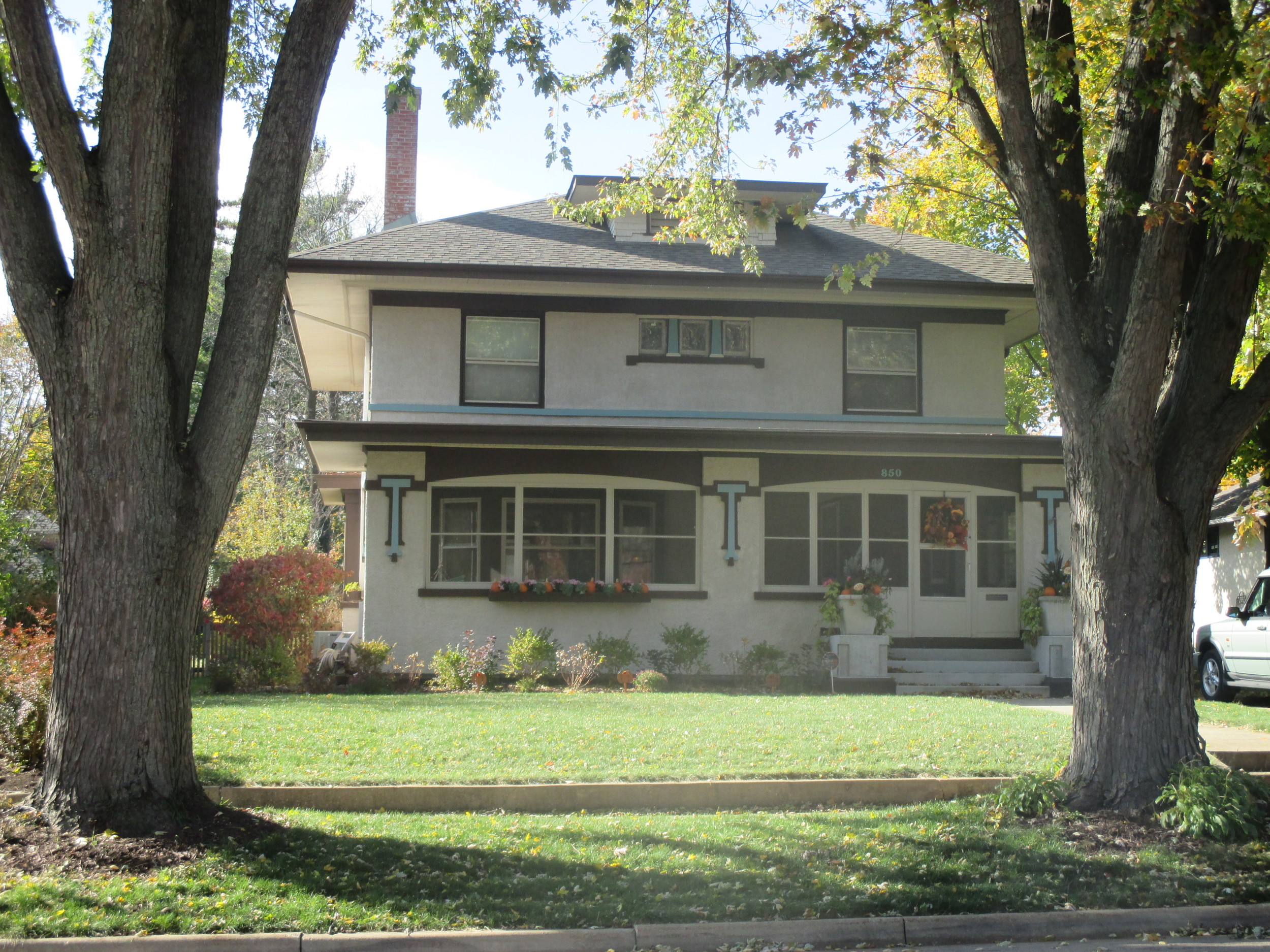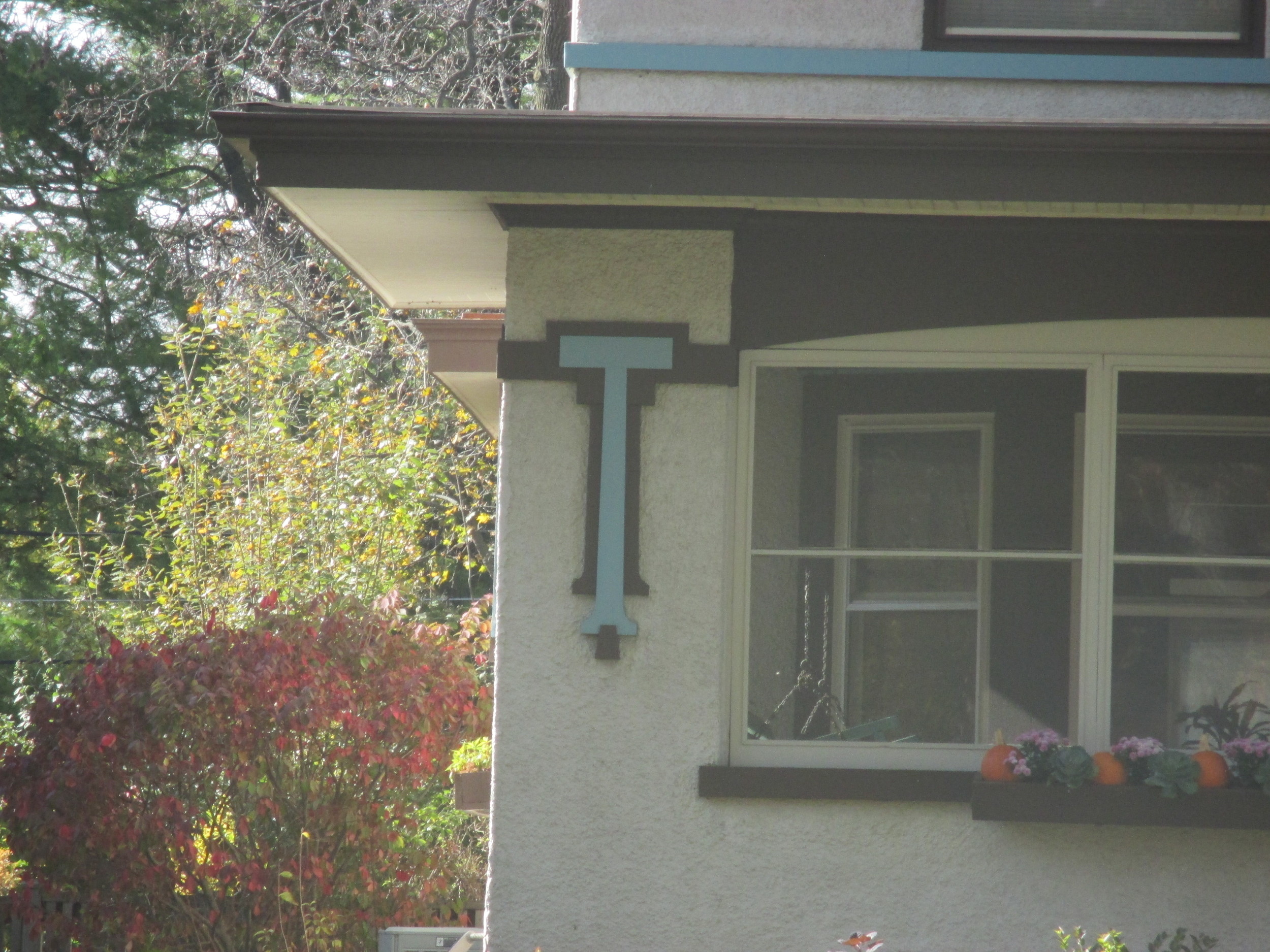850 DOUGLAS AVENUE
HISTORIC SIGNIFICANCE
850 Douglas Avenue is an excellent example of the Prairie Style built for Royal and Grace Kimball in 1908 at a cost of $8,000. Royal was a hardware retailer in partnership with Fred Dietrich. In 1903 Kimball and Dietrich began making portable stovetop ovens in their store to keep employees busy during the off-season. The first model was dubbed the “Lady Elgin.” The oven was so successful that by 1908 they had a separate manufacturing facility and nationwide distribution. In 1918, the Elgin Stove and Oven Company incorporated and then moved to their new headquarters at 667 N. State Street.
Royal Kimball died in 1919 leaving his property in equal shared to his wife and daughter. Grace remained in residence for the next five years and eventually sold the home to August and Martha Scheele in 1925. This was the fourth house on Douglas that was occupied by the Scheele family.
August and his wife sold the house to Harold and Harriet Pratt in 1937. Harold Pratt is best known for the 1937 construction of a medieval-style castle at 1062 Cedar Avenue to house his collection of antique armor and books on medieval history. Pratt was an electrical engineer employed by Western Electric. In 1973, the Pratts sold the property to Robert E. Hill.
ARCHITECTURAL SIGNIFICANCE
This stucco home exhibits many Prairie Style characteristics including the low pitched hipped roof, widely overhanging eaves, two stories with a hanging stair bay on the north elevation, small leaded glass windows at the front elevation and a horizontal band that warps around the structure between the first and second stories. The front porch is supported by massive Prairie Style masonry columns, featuring decorative detailing at the tops.
The residence was designed by prominent Elgin Architects Postle and Mahler, who designed several large homes for Elgin’s wealthier citizens. The builder for 850 Douglas Avenue was Henry Jensen. Jensen was a native of Germany who came to Elgin in 1871. He began working as a carpenter and eventually formed his own business working with Elgin’s foremost architects including W.W. Abell, Smith Hoag, Postle and Mahler and George Morris.
TIMELINE OF PREVIOUS OWNERS
Sources: 2015 Heritage Plaque Application



